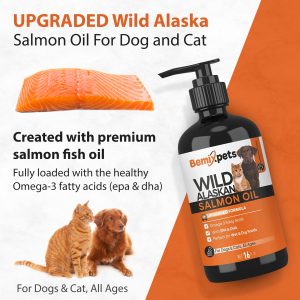You may be thinking about embarking on a raw feeding journey. But after just a little research you may be feeling confused. There seems to be so many opinions on which is the best way to feed a raw diet. So, let’s take a look and break down a few different raw feeding styles. This will help you to learn about each so that you can choose the best option for you and your dogs.
Contents
Prey Model Feeding
You may also see this called PMR. With this style of feeding you feed your dog whole prey. Yes, actually whole prey with the feet, head, skin, fur/feathers, and all the organs. You feed the whole animal. Think whole chickens, quail, pheasant, rabbit, mice, and other animals.
Those who feed using Prey Model Feeding add no plant matter or supplement to their pets diet. They believe that this style of feeding is what is seen in nature and, thus, is perfect the way it is. Nothing should be added or taken away. Just whole prey animals are fed.
When feeding this way you might feed the animals whole or you can cut it up if you have a smaller dog. You may also be able to find raw feeding shops offering smaller prey for smaller dogs, such as day old chics and quail. If you cannot find small enough prey for your dog you will need to cut it up to be small enough.
Some people who have a pack of dogs like to get larger whole prey animals such as sheep or cow to feed their pack. Just put the prey out and let the pack eat like a pack of wolves. This can work well, but also is potentially dangerous if the dog’s don’t like to share.
BARF
You may also hear this called Biologically Appropriate Raw Food or Bones And Raw Food. This feeding style is less strict than the PMR feeding style. BARF feeders will sometimes add in plant matter or supplement if they believe that their pet would benefit from them. However, you will also run into BARF feeders who are dead set against veggies and supplements.
In general, BARF feeders aim for 70% meat, 10% bone, 10% plant matter, 5% liver, and 5% other organs. If the BARF feeder doesn't feed plant matter then that portion is replaced with meat. This ratio can vary from one BARF feeder to the next, but this is a good starting point.
The BARF feeding style offers you a more individualized approach to feeding your dog than the PMR style. You can experiment with feeding vegetables and fruits, and playing with the ratios. You may notice that over time your dog does better with some plant matter added to the diet. You may notice that some dandelion greens and milk thistle in the spring are perfect for your dog, but he does better without veggies the rest of the year. BARF feeders are more free to experiment and customize the diet they feed to their dog’s needs.
Franken-Prey
Franken-Prey is so named because you use different parts to attempt to create a whole prey creature. For instance you may feed chicken wings, a little beef kidney, bison spleen, turkey liver, goat lung, lamb tongue, with a bit of ground pork. This, in effect, mimics a whole prey animal. Franken-Prey is often easier for people to source than whole prey.
With Franken-Prey there are countless options for meal combos. Additionally, Franken-Prey feeders will sometimes feed veggies and sometimes not feed veggies. They may or may not be for or against supplements. This is another option that is very customizable and can be tailored to your pet.
Additionally, those who feed Franken-Prey often go for balancing the diet overtime. So, each meal is not made into a small prey animal, but rather a whole prey animal might be created over a day or a week. This could look like beef liver and meat for breakfast, pig tails and goat heart for lunch, and lamb lung and pork kidney for dinner. Then perhaps adding in other organs, meat, and bones that are different the next day. And so on until you create a “whole prey” animal.
Ketogenic
A Ketogenic diet is any diet that contains low-no carbohydrates and is very high in fat. You have probably heard of this diet for people touting weight loss and other health benefits. But can it have those same effects on your dog?
This diet is particularly helpful for pets that suffer joint issues, cancer, autoimmune disease, and other chronic issues. The keto diet is particularly helpful for helping balance hormones and to help with metabolic issues.
With a ketogenic diet for dogs you are aiming for a 4:1 to a 2:1 ratio of fat:protein. So, you would feed 70% fat, 10% meat, 10% bone, 10% organs. This diet is best saved for therapeutic purposes in dogs. Remember, dogs are carnivores and they need meat to thrive. Long term a diet of 70% fat can reduce the amount of meat that your dog gets, this in turn can make it so that your dog does not get all the amino acids that it needs. However, a keto diet can be extremely helpful for short term feeding in dogs.
The fat used can be butter, skin, beef tallow, raw goat milk, cream, duck fat, egg yolks, and fatty cuts of meat. Fat holds onto a lot of toxins so be sure that you source grass-fed, pasture-raised, non-GMO, organic, and ethically raised fats for best results.
The Ketogenic diet is not for all dogs but it can be extremely helpful in some cases, particularly with fighting off cancer. Be sure to talk with your holistic vet about the possibility of a ketogenic diet in helping the fight against cancer.
Gorging and Fasting
This style of eating can be combined with any of the others: PMR, BARF, Franken-Prey, Keto, etc. This is less about what is fed and more about when the food is fed. Gorging and fasting can be an excellent option if you are feeding whole prey to a smaller dog. Feeding a larger chicken or rabbit to a small dog every few days. Then you don’t have to worry about cutting it up at all!
This idea of gorging and fasting comes from wolves living in the wild. Wolves will often eat up to 15lbs of food from one kill. Then they will often go without food for a few days. Wolves don’t think “oh, it’s 8:00am, breakfast time. I better make a kill!” Most days revolve around finding food and trying to make a kill, but they don’t happen everyday.
Since the digestive tract of a dog is basically the same as that of a wolf it makes sense to feed them like wolves. A large meal every few days and then fasting in between the meals. Fasting is a wonderful way to help the dog’s digestive system rest and rebuild. If the body is not using as much energy to digest then it can focus the energy on healing and repairing and improving other areas of the body.
Even though your dog is fasting it is still very important to feed him enough food when he does eat, this is not a weight-loss plan, per say. A dog should receive 2-3% of his body weight daily, the exact amount depends on his activity level. So, an active 60-pound Golden should get about 1.8 pounds of raw food per day. What if you want to fast that Golden Retriever? Then you will need to feed him 3.6 pounds of food the day before the fast.
Another way that you could go about it is to measure the amount of food you are going to feed your dog for the week. In the case of our active, 60 pound Golden that would be 12.6 pounds of food per week. You could feed a whole prey rabbit that is about 4 pound on Monday, Wednesday, and Saturday, and not feed anything on the other days. This is just one potential example.
Fasting can have wonderful health benefits for your raw fed dog. Dogs with a history of pancreatitis, senior dogs, and puppies may not do well with fasting. It is best to talk over the pros and cons of gorging and fasting with your holistic vet before proceeding. It is a good idea to start slowly with fasting, perhaps just skip one meal or only feed one meal a day. Then skip a whole day of meals. You can also experiment and see how your dog does with it. It is best not to fast for more than 4 days at a time. It is a good idea to consider the energy that you are wanting your dog to use during times of fasting as well.
Traditional Chinese Medicine
Traditional Chinese Medicine holds a belief that all foods have an effect on the body. This effect can be warming, cooling, neutral, dry, or moist. For example cucumbers have a cooling effect, while cinnamon is warming. But how can this help your dog?
Well, perhaps your dog runs hot, he always seeks the air conditioning vent when it is on and is the first to leap into a body of cold water. This type of dog may benefit from cooling foods, helping him to regulate his body temperature more effectively. On the other hand, you may have a dog that loves to snuggle under the covers and likes to lay close to the fire. This is the kind of dog that would benefit from warming foods. You can also feed cooling foods on hot summer days and warming foods in the cold winter months.
With TCM the temperament of the individual also plays an important role. If your dog has a tendency to be more aggressive, then feeding cooling foods can help to cool his temper. If you have a dog that is very shy and timid, a diet of warming foods may be very beneficial.
Traditional Chinese Medicine also looks at disease and associates them with things like hot, cold, damp, dry, and others. A vet trained in TCM will look at health issues and use food to help bring balance back to the body. For instance, a health issue that is associated with dampness would benefit from drying foods. You can use any of the above feeding methods with these TCM food principales. If you choose to feed this way it is important to do a lot of research and seek the help of a veterinarian trained in Traditional Chinese Veterinary Medicine.
Organ Meat
Organs are an important part of any raw diet. They are a powerhouse of important vitamins and minerals, essentially the multivitamin of the carnivore world. Organs are separated into two groups: secreting and non-secreting. Secreting organs are organs that secrete something, examples are the liver, kidneys, spleen, thymus, brain, reproductive organs, and others. Non-secreting organs include things like the skin, gizzards, hearts, and lungs. These are often fed as part of the meat portion in the diet vs. as part of the organ percentage of the raw diet.
You will often see it recommended that you feed 5% liver and 5% other secreting organs for a total of 10% organ meat. This is supposed to be a representation of whole prey. However, there are others who argue that more organs should be fed.
Some raw feeders like to look at whole wild prey and when they break it down they see 50% muscle meat, 12% bone, 16% skin, which leaves 22% to be organ meat! That is a pretty big difference. Of course, this will vary from one prey animal to the next. But still 22% is quite a bit higher than 10% when it comes to organs.
However, many dogs do totally fine with 10% secreting organs in their diet. But experimenting with more wouldn’t hurt. Remember these organs are the multivitamins for carnivores so feeding plenty and feeding a variety is key.
A lot of the secreting organs, especially the kidneys and liver, can hold a lot of toxins. This is because they are used to flush toxins out of the body. It is very important that you feed organs that are from ethically raised and pasture raised animals whenever possible. This will reduce the overall amount of toxins that might be in the organ you are feeding.
Plant Matter
You might have noticed by now that there is some controversy as to if plant matter is good for dog’s or not. It is agreed amongst most raw feeders that starches and grains do not belong in the diet of any carnivore. However, some raw feeders do like to add a tiny bit of fruit and some non-starchy vegetables. Some raw feeders even like to add a few seeds and nuts to the diet.
Non-starchy vegetables include things like dandelion greens, parsley, alfalfa sprouts, lettuce, summer squash, cabbage, and green beans. Fruits that you add could be blueberries, raspberries or a bit of apple. These can add some lovely antioxidants to the diet. Choose organic veggies and fruits for best results.
Dogs do not absorb plant matter very well. For the best absorption the plant matter plants should be lightly cooked, fermented, or pureed. These are the best ways to ensure that your dog gets the nutrients from the plants that you are trying to feed.
It is a great idea to do a little bit of experimentation when it comes to plant matter in your carnivores diet. Some dogs will do extremely well with plants in their diet, while others will do best 100% meat and not plants. Still others will do well with plants sometimes and only meat other times. Experimentation and an open mind are key to knowing what is best for your dog.
Getting Started
As you have read through these different feeding methods I am sure that one of them stood out to you. One seemed like it made more sense for your situation or one seemed easier. This is a good place for you to start your raw feeding adventure! You might choose Prey Model Raw, Biologically Appropriate Raw Food, Traditional Chinese Medicine Feeding, Gorging and Fasting, or Ketogenic any of them have the ability to help your dog live a better life.
Whichever you choose, do your research. You can find excellent books, websites, facebook groups, and more that are dedicated to the feeding style you are interested in. The best thing you can do is start and always continue to learn as you go! Your dog’s diet does not need to be perfect for you to start.
It is an excellent idea to keep a food journal for your dog. You can write down what you feed, how often you feed, any supplements you give, etc. Then add some notes about anything that seems unusually about your dogs physical self or about his behavior. This will help you to draw associations between what you dog eats and any unwanted physical issues or behavioral issues you see.
In your journaling you may find that your dog gets itchy after eating beef. Or that he barks 10 times more after eating chicken. Or that he always has an upset tummy after eating alpaca. This journal is a great place to keep track of your experiment with raw feeding. If you feed veggies for a bit take notes and notice any changes. If you choose to try gorging and fasting, take notes and see the pros and cons.
There is no “one size fits all” diet when it comes to dogs. Each dog is an individual and should be fed as such. Continue to learn, observe, and tweak your dog’s diet as you go. This will ensure optimal health and happiness for your dog! Remember variety is also key to a healthy, happy dog.






Leave a Reply
You must be logged in to post a comment.